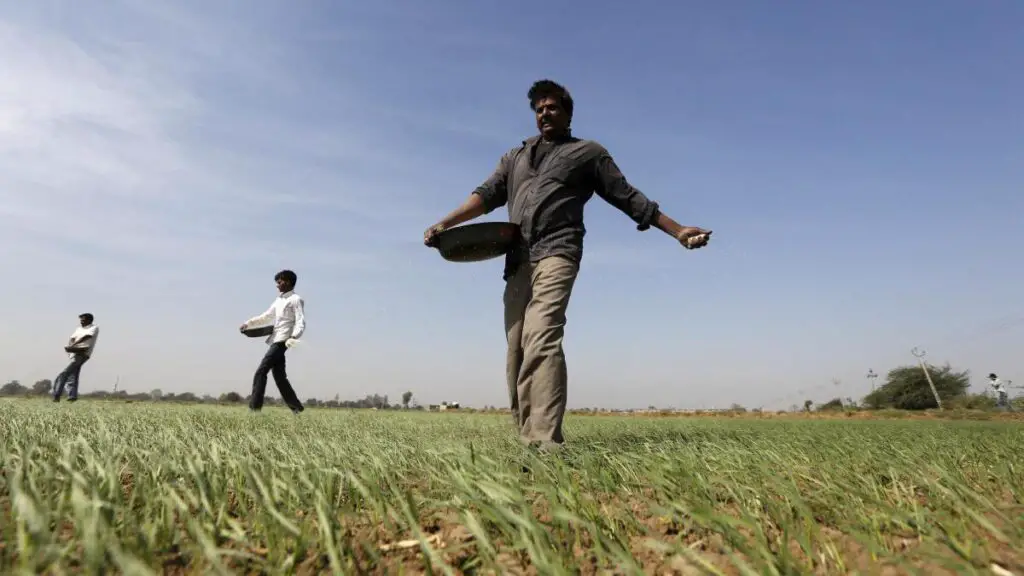Problematic Phosphorus: A Global Challenge in Agriculture
Throughout the history of agriculture, the issue of maintaining soil fertility has been a constant struggle. Early farmers quickly noticed that repeated cultivation and harvests led to nutrient depletion in the soil, resulting in decreased crop yields. To combat this problem, ancient agricultural societies developed various methods of fertilization, such as using fish remnants and bird droppings as natural fertilizers.
However, in the 19th century, chemistry advancements paved the way for synthetic fertilizers and the identification of essential nutrients like nitrogen, phosphorus, and potassium. These synthetic fertilizers became the cornerstone of modern agriculture, contributing to the immense increase in agricultural productivity during the Green Revolution of the mid-20th century.
Nevertheless, a new problem has emerged. Phosphorus, a crucial nutrient for plant growth, is scarce and limited to specific geological formations. Not only are we running out of phosphorus, but the excess use of phosphorus fertilizers also pollutes the environment. Unlike gases, phosphorus can only move from land to water, leading to harmful algal blooms and eutrophication.
This issue is compounded by the geopolitical landscape surrounding phosphorus. Only a few countries control most of the world’s phosphorus reserves, making it a significant geopolitical concern. Morocco and the Western Sahara region possess the largest reserves, but these reserves also contain cadmium, a toxic heavy metal that can accumulate in the kidneys of animals and humans. As a result, fertilizers with high cadmium content are often used, leading to cadmium bioaccumulation in our bodies and an increased risk of heart disease.
To address the growing concern of cadmium-laden fertilizers, the EU introduced legislation to regulate cadmium levels. However, this has caused a surge in the market for safe phosphorus, where only six countries possess substantial cadmium-free reserves. China restricted its phosphorus exports in 2020, and many EU countries no longer buy from Russia, further exacerbating the issue. Sri Lanka, for example, banned synthetic fertilizer imports and went organic in 2021, resulting in a sudden drop in crop yields and a subsequent political crisis.
India currently serves as the world’s largest importer of phosphorus, primarily relying on cadmium-laden deposits from West Africa. This poses significant health concerns as paddy, a staple crop in India, is particularly susceptible to cadmium absorption. While other grains absorb cadmium to a lesser extent, the overall impact on public health cannot be ignored.
The disposal of phosphorus presents another challenge. Only a small fraction of the phosphorus mined is actually consumed through food, with much of it lost as agricultural runoff due to excessive fertilizer application. Additionally, most of the phosphorus consumed by people ends up in sewage. India, for instance, still struggles with inadequate sewage treatment, allowing nitrates and phosphates to be discharged into water bodies. Algal blooms feed on these nutrients, leading to oxygen depletion, fish deaths, and toxic blooms that harm human health.
To alleviate the scarcity of phosphorus, precision agriculture techniques and low-input agro-ecological approaches have shown promise in reducing reliance on chemical fertilizers. These methods can be highly effective, especially for smallholder farmers who cannot afford expensive chemical fertilizers. However, there is growing interest in mining phosphorus from urban sewage and establishing circular water economies.
One approach is the use of source-separating toilets, which separate urine and feces at the collection point. Collecting and processing urine from these toilets could generate a localized and safe fertilizer source. Another method involves recycling wastewater and sewage sludge, but concerns exist regarding excessive nutrient levels and transport cost feasibility. Retrofitting sewage treatment plants to extract nutrients from sludge, as seen in some European companies, provides a potentially game-changing solution.
Despite the economic viability of these technologies, several obstacles hinder their realization. In rural India, powerful farmers who double as fertilizer dealers incentivize excessive fertilizer use among smaller farmers. Raising awareness and improving extension services are key to tackling this issue. In urban India, sewage treatment is often seen as undignified and carries historical associations with lower castes, leading to inadequate regulations and reluctance to invest in treatment infrastructure.
Furthermore, most cities view wastewater treatment as a cost center rather than a revenue-generating venture. As a result, utilities hesitate to invest in expensive treatment processes, which contributes to water pollution. Breaking this cycle requires a fundamental rethink of our approach, with affordable technology and a shift from treating sewage as waste to treating it as a valuable resource.
By addressing these challenges and implementing innovative solutions, we can potentially overcome the phosphorus scarcity crisis and establish sustainable agricultural practices for the future.


